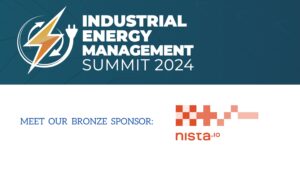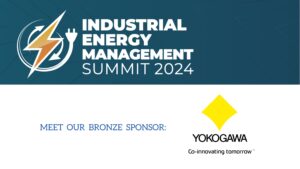Scope 3 emissions refer to indirect greenhouse gas (GHG) emissions. It occurs in a company’s value chain. As per the Greenhouse Gas Protocol, Scope 3 is an optional reporting category. It allows organizations to account for all remaining emissions in their value chain that are not captured under Scope 1 and Scope 2.
Scope 3 emissions often make up the majority share of a company’s carbon footprint. For example, Scope 3 can constitute over 70-80% of total emissions in consumer goods or retail companies. Waste generated during upstream and downstream activities is a significant component of Scope 3. So, strategies based on circular economy principles can greatly reduce waste-related emissions and advance sustainability. So, let us look at them in-depth ahead.
What are Scope 3 Waste Emissions?
Waste within Scope 3 boundaries occurs at multiple stages across the product’s lifecycle. Furthermore, it comprises solid waste as well as wastewater generation originating from the extraction of raw materials, manufacturing and production processes, transportation and distribution, use phase of products, and end-of-life disposal. Waste results in emissions in several ways:
- Organic waste such as food, paper, wood, etc. undergoes anaerobic decomposition. It also releases potent GHGs like methane and CO2.
- Incineration of waste, especially plastics, generates emissions.
- Wastewater treatment at facilities causes a release of nitrous oxide as well as methane from sludge.
- Landfilling of waste causes methane emissions as materials slowly degrade in the oxygen-deficient environment.
Calculating emissions from solid waste as per the GHG Protocol involves “multiplying the amount of waste generated in each waste category. This is by cradle-to-grave emission factors”. Moreover, for wastewater, the calculation methodology focuses on nitrous oxide released from effluent treatment.
So, minimizing waste generation through the supply chain is an impactful way to lower the Scope 3 footprint. As a result, circular economy strategies provide a systemic solution.
Scope 3 Waste: Why Are Circular Economy Strategies Important?
The predominant linear “take-make-waste” model of production and consumption depletes natural resources. It also causes massive waste. Moreover, transitioning to a circular economy disrupts this unsustainable pattern. This is by decoupling growth from finite resource consumption.
Now you must be wondering what is a circular economy strategy for waste management. The Ellen MacArthur Foundation defines circular economy as “based on the principles of designing out waste and pollution, keeping products and materials in use, and regenerating natural systems.” Furthermore, implementing circularity requires a sweeping transformation of processes. It also requires a transformation of business models and mindsets. However, the environmental and economic benefits make this shift imperative. Some advantages of a circular economy relevant to Scope 3 waste are:
Maximizes Resource Utility
Eliminating waste means products and materials remain in use for longer. This is through repair, reuse, remanufacturing, and recycling. For eg, metals can serve multiple purposes. This is through remelting and plastic has the potential for infinite recycling if properly collected and processed. Moreover, circularity introduces diversity in the value derived from resources.
Reduces the Need for Virgin Material Extraction
Recycling materials such as glass, metal, paper, plastic, and e-waste diminishes the need to keep extracting finite raw materials. As a result, this directly avoids emissions associated with resource mining and harvesting.
Minimizes Landfill Waste
With circular resource flows, products and components are continuously recovered, restored, and reused instead of being discarded. So, this drastically shrinks waste ending up in landfills that emit methane for years.
Lowers Energy Consumption
Remanufacturing products and recycling materials are energetically favorable. This is compared to creating from scratch. For instance, recycling aluminum saves over 90% of the energy required for primary production. So, improving energy efficiency results in lower emissions.
Develops Regenerative Systems
A circular economy gradually decouples economic growth from natural resource extraction and emissions. Furthermore, the regenerative model utilizes renewable energy, and bio-based materials and mimics natural cycles. Additionally, this sustains business in the long run while allowing ecological systems to thrive.
Circular strategies applied to key emission hotspots in the value chain can significantly reduce Scope 3 waste and emissions. We hope that what is a circular economy strategy for waste management is clear-cut now.
Scope 3 Waste: Circular Strategies to Minimize It
Several circular interventions can be implemented across the product lifecycle for scope 3 waste. This is to eliminate waste. Companies must identify emission reduction priorities. It should be based on their value chain and also incorporate suitable circular solutions.
Sustainable Sourcing of Raw Materials
Sourcing recycled, renewable, and less emission-intensive materials is a powerful way to reduce upstream Scope 3 emissions. So, here are some strategies that can be used:
- Utilize recycled content – Using recycled materials such as recycled polymers, metals, aggregates, and minerals reduces the extraction of virgin resources. As a result, this directly avoids emissions from mining activities and resource processing. For example, steel produced from recycled scrap requires 75% less energy than virgin steel.
- Source bio-based materials – Bio-based plastics derived from feedstock like corn starch or sugarcane have a lower carbon footprint. This is compared to conventional plastics made from fossil fuels. So, using more renewables-based materials in packaging and products lowers supply chain emissions intensity.
- Engage suppliers on waste avoidance – Collaborate with suppliers. This is to optimize production planning and inventory control. It avoids excess raw material orders. Moreover, promote improved handling and storage to minimize losses and wastage of raw materials.
Sustainable Manufacturing
Introducing circularity into manufacturing processes through waste minimization, by-product utilization, and adaptable systems avoids emission generation in scope 3 waste. Let us look at some strategies that can be used under it:
- Minimize process waste – Employ technology like advanced sensors on production lines. This is to get real-time visibility into material consumption and also take corrective action wherever excess waste is generated.
- Implement by-product synergy – Explore whether a process by-product or waste stream in one facility can become a usable raw material for another process. Furthermore, this industrial symbiosis prevents waste while improving resource utilization.
- Adopt flexible manufacturing – Use modular and reconfigurable production systems. This is to enable swapping out parts for upgrades or repairs instead of entirely replacing equipment. As a result, this increases asset longevity and productivity.
Product Design
Sustainable product design focused on durability, modularity and ease of disassembly enables extended lifespan through repair, reuse, and remanufacturing. Here are some strategies for product design:
- Design for durability – Increase structural strength and enable easy disassembly of components. It helps to extend product lifespan through repair and reassembly. Moreover, using higher-grade materials can enhance durability and avoid early product obsolescence.
- Design for modularity – Create products with interchangeable components. This is for easy upgradation, refurbishment, and remanufacturing. Furthermore, individual parts replacement improves serviceability and prevents discarding entire products.
- Design for disassembly – Ensure joints and fasteners are easily accessible. It should also be detachable using common tools. Moreover, avoid toxic adhesives and utilize mechanical fixtures instead. As a result, this simplifies end-of-life disassembly for material recovery.
Sustainable Distribution
Optimizing transportation and packaging reduces waste in product distribution. So, let us read through some of the strategies for sustainable distribution:
- Optimizing logistics – Analyze freight vehicle utilization rates and distribution networks. It helps to identify opportunities to improve load consolidation. This also reduces miles traveled and fuel consumed per shipment. Moreover, route optimization lowers transport emissions.
- Alternate packaging – Use returnable and reusable packaging like plastic crates and pallets. They are great for storage and transportation. Furthermore, invest in developing compostable or recyclable alternatives to hard-to-recycle packaging. Also, reduce packaging weight and volume to lower material use.
- Warehouse efficiency – Ensure proper stock rotation and use of sensor-enabled storage systems. Furthermore, accurate inventory monitoring minimizes losses due to mishandling, spoilage, or expiry. Moreover, efficient warehousing protects product integrity and prevents waste.
Circular Use Phase
Providing product access, reuse, and repair services rather than traditional sales promotes circularity in the use phase. So, let us find out some strategies for it:
- Adopt product-as-service – Offer product access and leasing rather than traditional sales. Furthermore, selling services tied to products incentivizes manufacturers to enhance durability and enable reuse. As a result, this leads to longer product lifetimes and lower replacement rates.
- Reuse models – Facilitate collection and redistribution of used products. This is into second-hand markets through buy-back or return programs. Additionally, online platforms enable greater access to refurbished goods at lower price points.
- Remanufacturing – Provide repair and restoration services to return used products to a “like-new” functioning state. Component harvesting from defective products also feeds the remanufacturing process. As a result, this substitutes new product demand.
Reverse Cycle Processing
Establishing effective collection systems and recovery pathways for end-of-life products and materials enables circularity in scope 3 waste. So, let us shed light on some strategies for reverse cycle processing:
- Product takeback – Implement effective takeback systems and collection mechanisms. This is to recover end-of-life products, components, and materials discarded by consumers. As a result, this segregates recyclables reducing contamination and waste.
- Disassembly and refurbishment – Methodically disassemble collected products. It identifies components suitable for reuse. Furthermore, refurbish usable parts to support remanufacturing and product repair. Moreover, prevent useful materials from getting lost.
- Recycle – Sort and process collected materials like glass, metals, paper, plastics, and e-waste. This is through specialized recycling facilities. Moreover, feed purified recyclate streams back to manufacturing. For unrecyclable materials, explore options like waste-to-energy.
Effective implementation of circular economy solutions through cross-value chain engagement is key to maximizing Scope 3 waste and emission reduction.
The Road Ahead
Achieving circularity at scale for scope 3 waste requires resolute action, multi-stakeholder partnerships, and the right policy environment. Companies also need to make sustainability intrinsic to operations, set circular economy goals, and put in place robust transition roadmaps.
Investment in circular innovations and models is vital to de-risk the transition and develop integrated value chains. Moreover, the focus must expand from only recycling to exploring digital solutions. This is for traceability, product-as-service, sustainable design, and establishing robust reverse logistics.
Additionally, governments play a pivotal role in enabling circularity. This is through economic incentives, public procurement frameworks, and legislation around extended producer responsibility (EPR). So, a global consensus is needed on metrics to assess circularity and integrate it into climate action plans.
The upcoming 2nd Scope 3 Emissions Reduction Summit on 18-19 April 2024 in Berlin, Germany convenes experts across sectors to discuss cutting-edge approaches to lower value chain emissions. Strategies for minimizing scope 3 waste through circular economy principles occupy one of the center stages at the event. The high-impact event provides a unique platform for sustainability professionals to gain actionable insights on Scope 3 challenges, emerging solutions, and collaborative frameworks. So, make sure you register for the summit to lead the way!





